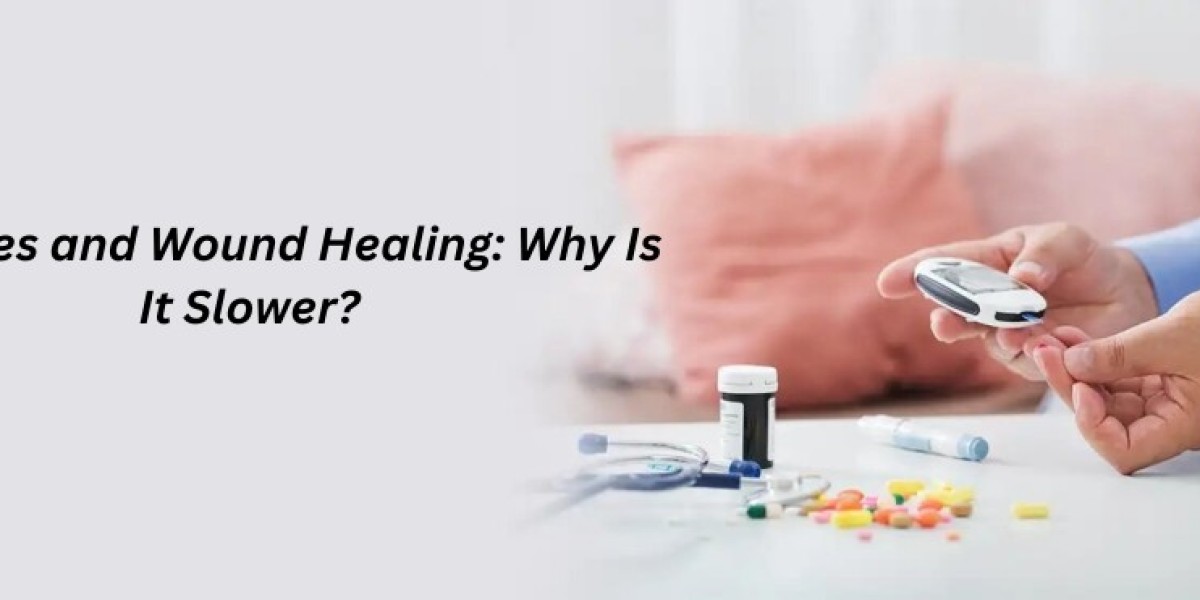Diabetes is a lifelong health issue featuring increased blood sugar levels. It is the outcome of the inability of the body to produce or use insulin- a hormone responsible for regulating blood sugar levels by using glucose/sugar for energy production. The best doctor for diabetes in Bangalore at Magna Centre shares that - Diabetes can impact the body in several ways, one of which is slow wound healing. A small injury that occurs on the body can quickly turn serious and the body can find it hard to heal itself.
Thinking about why there is slow healing of diabetic wounds and ways to speed up the healing process? Keep reading. Knowing about the reasons behind slow diabetic wound healing can help you avoid serious complications with the best endocrinologist in Bangalore at Magna Centre.
What factors cause slow wound healing in diabetics?
Diabetic individuals tend to heal gradually or not properly due to the following reasons:
1. Hyperglycaemia (High blood sugar/glucose levels)
At the cellular level, a rise in blood sugar leads to:
Increased inflammation of the body cells
Reduced energy levels due to the disturbed micro-environment of the blood vessels and their quick stiffening and narrowing further cause poor circulation of oxygen and nutrients dissolved in the blood for energizing the body cells to properly function.
Inefficient working of the immune system
All of this contributes to delayed healing of the wounds.
2. Neuropathy (Damaged nerves)
One of the complications of having very high blood sugar levels for a prolonged period is peripheral neuropathy. Usually, nerve damage happens in the hands and feet when there is uncontrolled diabetes. This results in the numbing of hands and feet and subsequently patient’s negligence in receiving treatment. Over time, the untreated wound worsens and is at high risk of infection, thereby delaying the natural healing of the wound.
3. Poor blood circulation
Diabetics often develop peripheral vascular disease, a condition characterized by poor blood supply. Their blood vessels narrow, blood gets thicker because of high blood sugar, and the extremities of the body are unable to receive blood. These complications impact the natural wound-healing process.
4. Improper or reduced functioning of the immune system
Increased blood sugar level greatly reduces the movement of the immune cells to wound sites, thereby affecting the body’s ability to get rid of germs and microbe invaders-causing infections. There is even a weakening of the skin barrier because of reduced new tissue growth which is naturally stimulated by collagen protein growth.
In the body of a diabetic, enzymes and hormones are produced which makes the immune system less effective. Moreover, there is reduced growth hormone production which impedes the body’s natural wound healing response.
What self-help measures can allow a normal rate of wound healing process?
Here are some tips to help with the slow healing of wounds:
1. Take proper nutrition
Having a healthy diet means getting enough essential vitamins and nutrients that take part in the wound-healing process. Adequate amounts of carbs, proteins, and vitamins in the diet can help keep the immune system well-functioning and make the skin barrier stronger.
2. Perform daily self-checks of your physical health
Looking for any wounds and abnormalities every day, especially if suffering from diabetic neuropathy, can allow early detection of wounds, appropriate care, and avoidance of infections that delay wound healing.
3. Avoid putting pressure on wounds
If pressure is placed over the wounds, the blood circulation to the affected area becomes poor and this leads to slow wound healing. Moreover, the wound is subjected to wear and tear further damaging it and creating a deeper wound or ulcer.
4. Do proper wound care
Best diabetologist in Bangalore shares that, to avoid a wound from catching an infection, the dressing should be kept fresh and sterile, so that the wound remains moist. Moist wounds heal faster than dry wounds as moisture aids in new skin cell growth and reduces bacterial growth.
5. Remove dead or damaged wound tissues
Diabetic wounds are often associated with excess or necrotic tissues, promoting bacteria and toxins, and increasing the risk of wound infection. Therefore, a medical procedure called debridement is necessary if a wound is not naturally healing because of damaged, dead, or infected tissue growth over the wound.
6. Quit smoking
Smoking delays delayed healing because the nicotine constricts the blood vessels and leads to poor blood flow to the wound.
When to see an endocrinologist?
If you are a diabetic with a wound and experiencing persistent or worsening discomfort, swelling, and/or tingling, burning, or loss of sensation, then you should contact your doctor. Your doctor can thoroughly examine your wound and provide you with the best care possible; a quick, appropriate treatment; and reduce your chances of experiencing any complications.
Where to get help?
If your search is for the best doctor for diabetes in Bangalore, contact Magna Centre today and request an appointment with an expert endocrinologist. Magna Centre and their team can provide you best advice on diabetic wound care and customized treatment at a pocket-friendly price.




